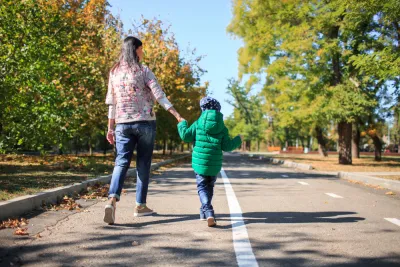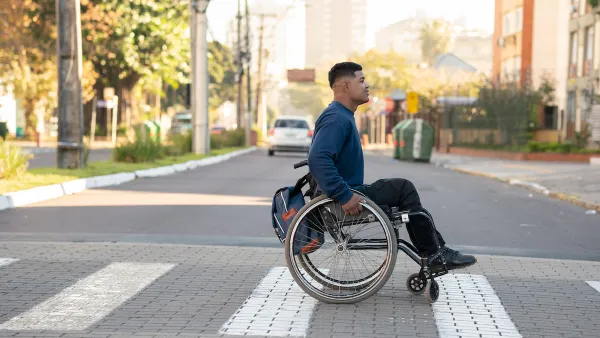A new VR tool invites urban planners to viscerally understand how a small child experiences the urban realm—with less-than-ideal results.

Won’t someone think of the children? Specifically, how do they see cities? As Nate Berg reports in Fast Company, a new VR tool aims to find out just that. “VR95 (as the name suggests) shrinks users to see a typical city scene from 95 centimeters, or three feet and one inch. This is the height of an average 3-year-old child.” The tool is designed to make city leaders, planners, and designers more aware of how children experience and use the built environment.
“The tool also shows what that same traffic-clogged city scene would look like if it was designed with that 3-year-old in mind. The sidewalks can be widened, pocket parks can be added, more green space can be planted, and car speeds can be reduced.” According to a guide developed by Arup and the Bernard van Leer Foundation called the Proximity of Care Design Guide, “Increasing access to nature, adding educational and play elements to public infrastructure, and engaging wider segments of the population in planning decisions are key ways cities can improve the lives of younger people.”
Far from just improving the experience of children, these changes would benefit all users of the public realm. Known as the ‘curb cut effect,’ this is the theory that designing for children, people with disabilities, or other vulnerable groups can improve cities for everyone. In Japan, where speed limits are low, curbside parking is rare, and streets are designed to force all modes to share the road, some neighborhoods are so safe that children as young as 2 or 3 can run errands on their own.
FULL STORY: This is how a 3-year-old sees a city—and it’s not very pleasant

Analysis: Cybertruck Fatality Rate Far Exceeds That of Ford Pinto
The Tesla Cybertruck was recalled seven times last year.

National Parks Layoffs Will Cause Communities to Lose Billions
Thousands of essential park workers were laid off this week, just before the busy spring break season.

Retro-silient?: America’s First “Eco-burb,” The Woodlands Turns 50
A master-planned community north of Houston offers lessons on green infrastructure and resilient design, but falls short of its founder’s lofty affordability and walkability goals.

Test News Post 1
This is a summary

Analysis: Cybertruck Fatality Rate Far Exceeds That of Ford Pinto
The Tesla Cybertruck was recalled seven times last year.

Test News Headline 46
Test for the image on the front page.
Urban Design for Planners 1: Software Tools
This six-course series explores essential urban design concepts using open source software and equips planners with the tools they need to participate fully in the urban design process.
Planning for Universal Design
Learn the tools for implementing Universal Design in planning regulations.
EMC Planning Group, Inc.
Planetizen
Planetizen
Mpact (formerly Rail~Volution)
Great Falls Development Authority, Inc.
HUDs Office of Policy Development and Research
NYU Wagner Graduate School of Public Service




























